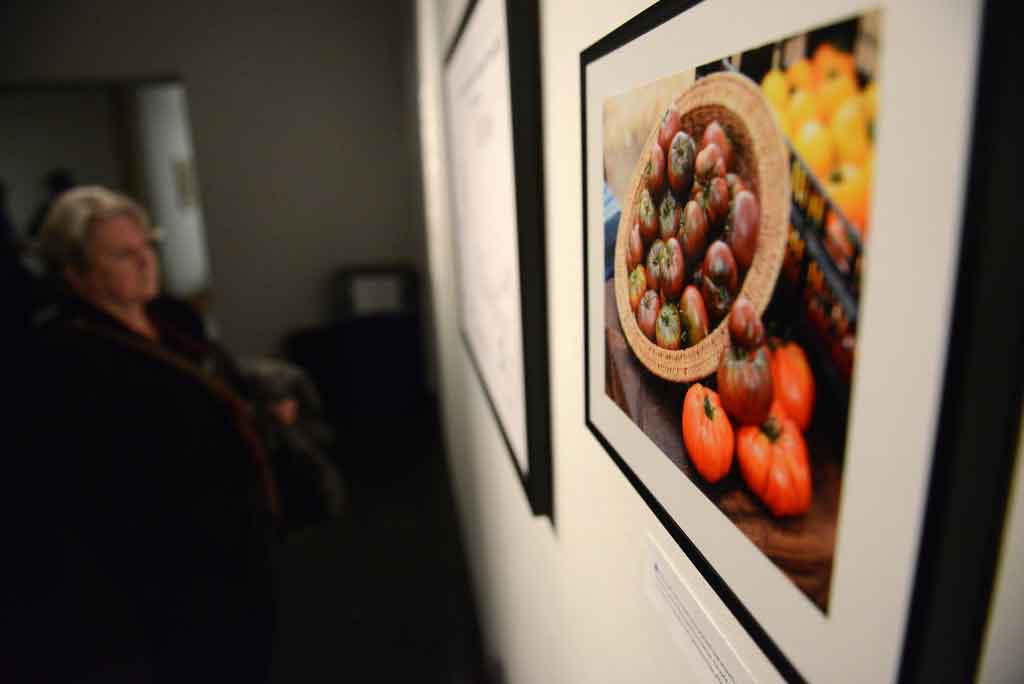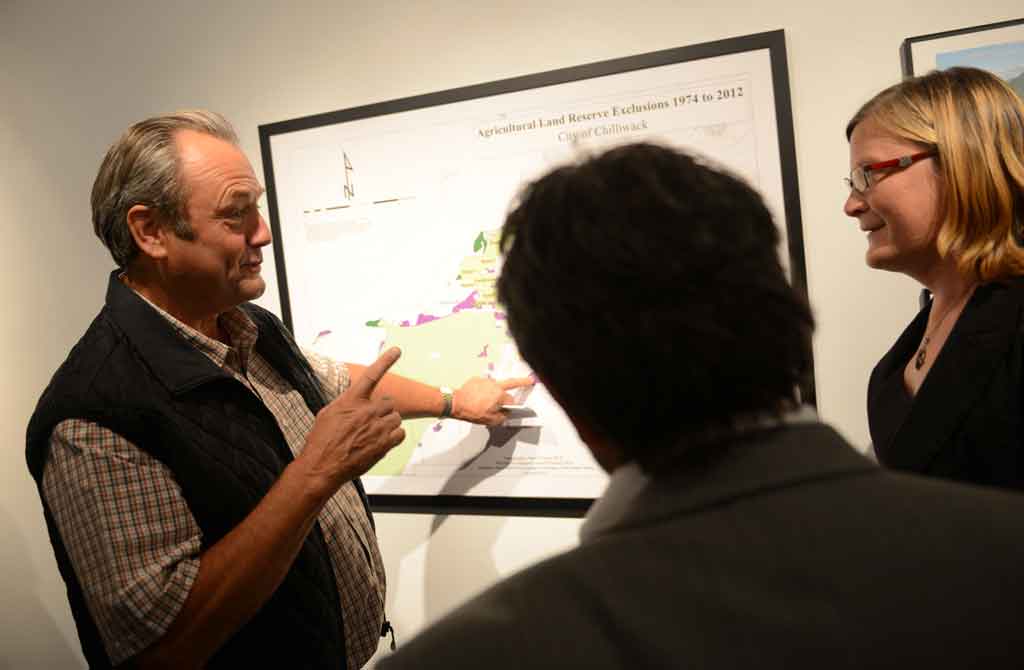By Kodie Cherrille (The Cascade) – Email
Print Edition: October 8, 2014

“When we saw a photograph of Earth from space for the first time, we thought: Huh. That’s all we have.”
That’s how hostess Lenore Newman — Canada Research Chair holder in food security and the environment, and associate professor of geography at UFV — kicked off the greenSPEAK lecture series about the Agricultural Land Reserve (ALR), titled Life in Agriburbia. As the group of six speakers delivered unique and thought-provoking talks, the theme of limited space defining our unique place emerged in interesting places.
Life in Agriburbia was held on the Abbotsford campus on Wednesday, October 1, with lectures in B101 from 4 to 5 p.m. Each speaker had 10 minutes to fully deliver their talk.
Lisa Powell, a postdoctoral fellow at UFV and UBC, provided a quick history of the ALR’s genesis. The ALR was created in 1973 with the passing of the Land Commission Act, and has since protected land intended for agricultural use. She also spoke of her own family’s struggles as farmers, threatened by ever-sprawling urban centres in Kentucky.
UFV agriculture professor Tom Baumann explained that ALR claims cannot be developed on without explicit permission from the owner of the property, but some exceptions are made. ALRs can be removed for the sake of road-building, schools, hospitals, energy corridors (i.e. power lines), and religious buildings, to name a few.
Farmers are also persistently approached by potential developers to take their land off the reserve and sell it. As urban centres expand, there is more pressure for existing ALRs to be sold off.
While the audience did learn how the grip continues to tighten on the ALR as more people move out to the Fraser Valley, Life in Agriburbia was not a glum forecast for future farm life. Rather, it was a celebration of the world-class agricultural status that the Fraser Valley has retained. Kim Sutherland (agrologist with the BC Ministry of Agriculture and Lands) gave some impressive statistics about the kind of stuff our farms yield: the Fraser Valley is one of the world’s best producers of blueberries, cranberries, and the kind of foliage that cows like. That last resource is critical — because of it, our dairy cow production is in the top 10 per cent in the world. “Perhaps even in in the top one per cent,” Sutherland added.
Furthermore, the preservation of the ALR has led to the phenomenon of “agriburbia”: where the urban and the rural coalesce into a singularly unique environment. It’s the fertile space where “the edge defines the centre,” says Brendan Hurley, urban planner for VIA Architecture. Farm markets, foodie culture, niche markets, dialogue with Aboriginal Peoples, guerrilla gardening: these are all part of Agriburbia.
“The more urban we get, the more rural we get,” explains Hurley. “It’s a symbiotic relationship.”
How symbiotic is this relationship? The answer would be given for the next hour at the art gallery in B136, where, over wine from Mt. Lehman Winery and cheeses from various dairies in Abbotsford and Chilliwack, the audience had the opportunity to talk with the lecturers. Life in agriburbia: friendly, meaningful dialogue, held over delicious food and drink, about the beautiful place we live in.
The gallery is currently displaying maps of ALR areas in the Fraser Valley. The exhibit will remain open until Friday, October 10.



